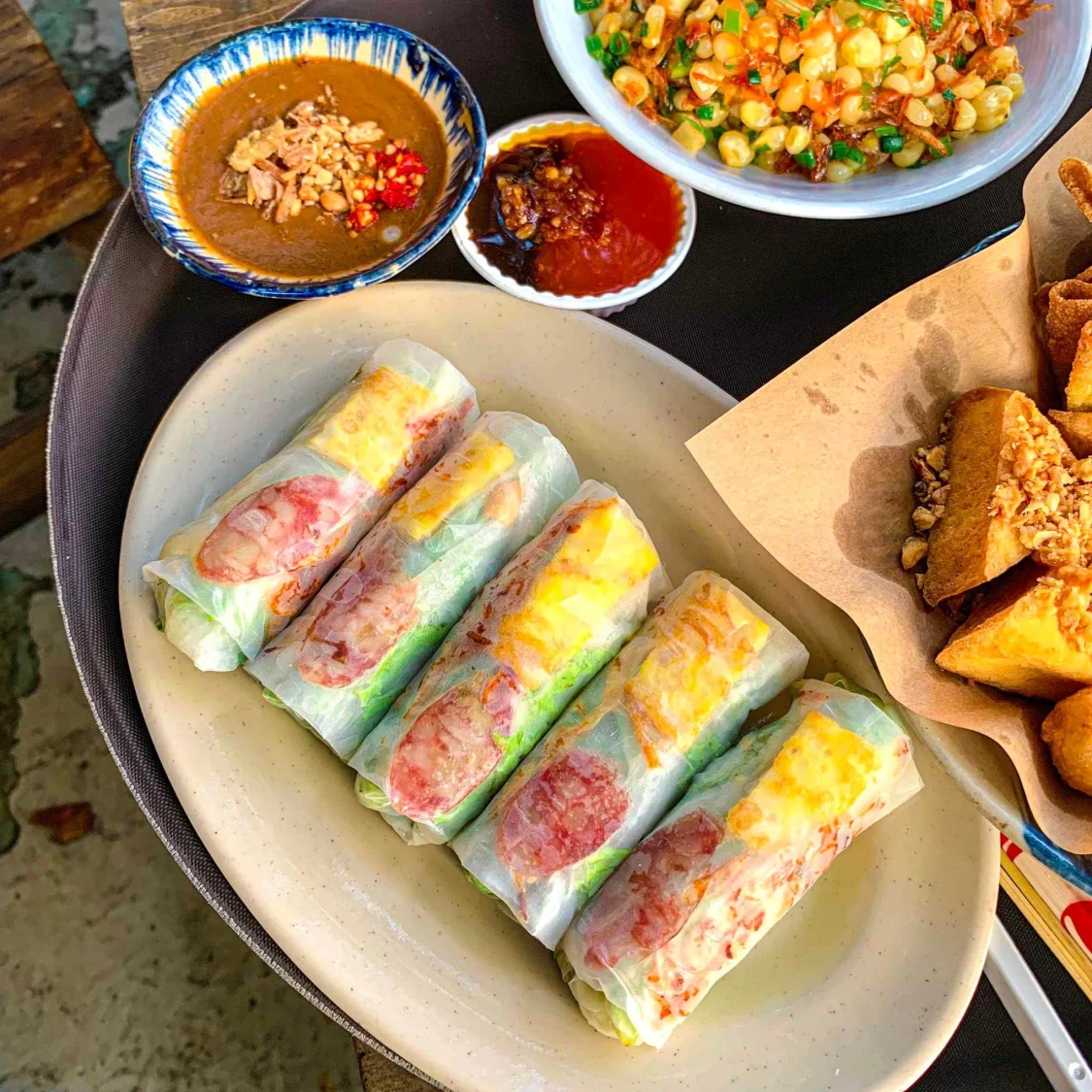
Bo Bia
Fresh spring rolls with Chinese sausage and jicama.
Ingredients
- •Rice paper
- •Chinese sausage
- •Jicama
- •Eggs
- •Dried shrimp
Instructions
Prepare Filling
Cook sausage and vegetables
Roll
Wrap ingredients in rice paper
Bò Bía is a delightful Vietnamese fresh spring roll that showcases the influence of Chinese cuisine on Vietnamese food culture. These rolls feature a harmonious combination of Chinese sausage, jicama, eggs, dried shrimp, and fresh herbs, all wrapped in translucent rice paper.
The dish originated from the Chinese popiah and was introduced to Vietnam by Chinese immigrants, particularly the Teochew community. Over time, Vietnamese cooks adapted the recipe to local tastes and ingredients, creating this unique variation that has become a popular street food, especially in southern Vietnam.
Making Bò Bía involves carefully preparing each component: julienning crisp jicama and carrots, slicing Chinese sausage thinly, making thin egg crepes, and rehydrating dried shrimp. These ingredients are then wrapped in rice paper along with fresh lettuce and herbs, creating a roll that offers multiple textures and flavors in each bite.
While the basic recipe remains consistent, vendors and home cooks often add their personal touch. Some might include blanched bean sprouts for extra crunch, while others might add Chinese celery or different types of sausage. The dipping sauce, typically made with hoisin sauce, peanut butter, and topped with crushed peanuts, can also vary in sweetness and consistency.
In Vietnam, Bò Bía is primarily enjoyed as a street food snack or light meal. Vendors often prepare the rolls fresh to order, ensuring maximum freshness and crispness of the vegetables. The rolls are served with the signature sweet hoisin-peanut sauce, which adds a rich, nutty complement to the fresh ingredients.
From a nutritional perspective, Bò Bía offers a relatively balanced combination of proteins from the sausage and shrimp, carbohydrates from the rice paper, and fiber from the vegetables. However, those with peanut allergies should be cautious of the traditional sauce. The dish can be adapted for different dietary needs by omitting certain ingredients, though the Chinese sausage is considered essential for its authentic flavor.
